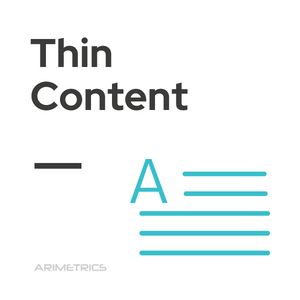
Thin content is content of a web page that is considered of little value and lacking in substance. It usually consists of short or superficial writings that provide superficial information that is often repetitive or copied directly from other websites.
Thin content is often considered spam by search engines, as it does not bring much value to users and can be used to trick search engines and improve the positioning of a website artificially. That is why its use is discouraged by SEO professionals.
Thin Content Examples
Some examples of thin content could be:
- Short articles or blog posts that lack information or details (e.g., lists, tips, or quick facts).
- Pages with very little text, or pages that only contain links to other content.
- Duplicate and syndicated content copied from other sites (e.g., press releases).
- Web pages with irrelevant content.
- Websites with misleading content.
Disadvantages of using Thin Content
Among the negative consequences of thin content we can highlight the following:
- Scarce content can negatively affect web positioning. Search engines like Google take into account the amount of content on each page when determining the relevance and quality of that page for a particular query. Pages with little content often rank worse than those with more content.
- It can scare away web traffic. Users don’t want to visit websites that aren’t useful or relevant to their interests, and search engines know that. If a website has pages with weak content, users can go elsewhere in search of the information they need.
- Scarce content can damage the brand and its reputation. In that case, users may perceive the web as useless or unreliable, and associate that bad image with the brand.
